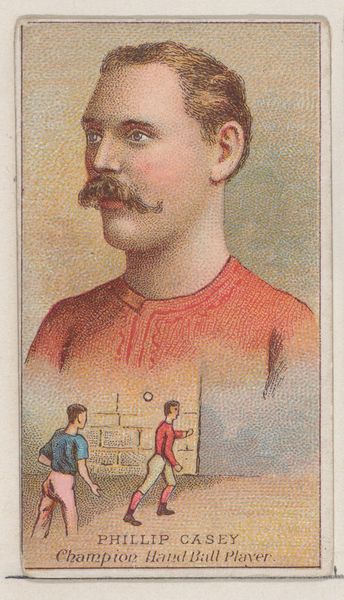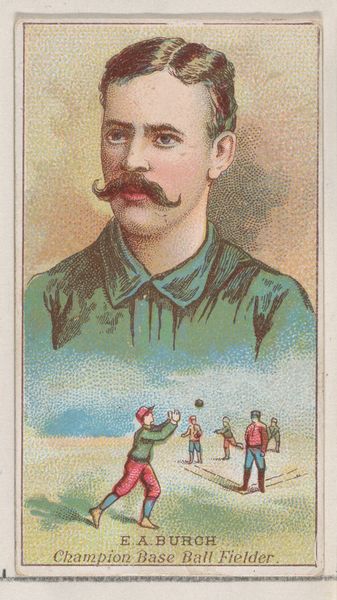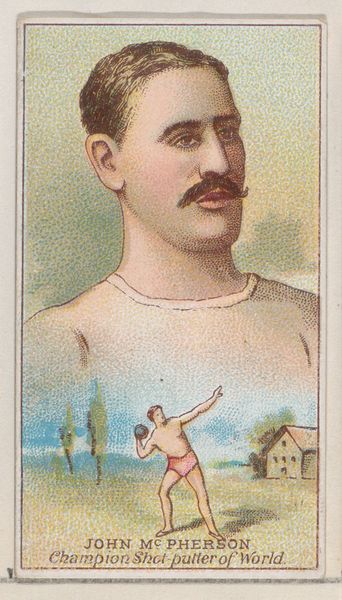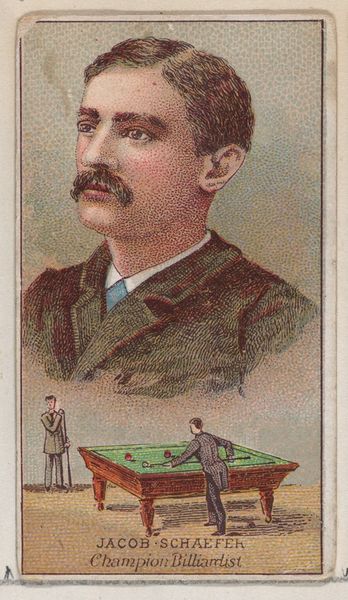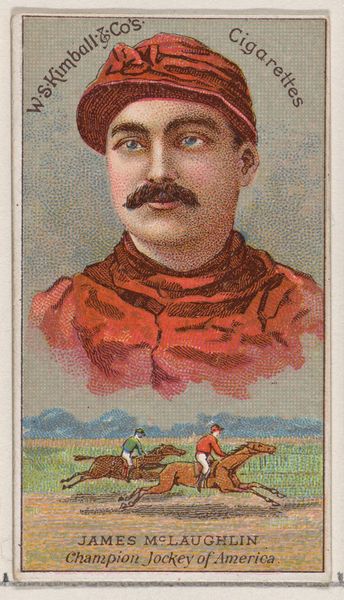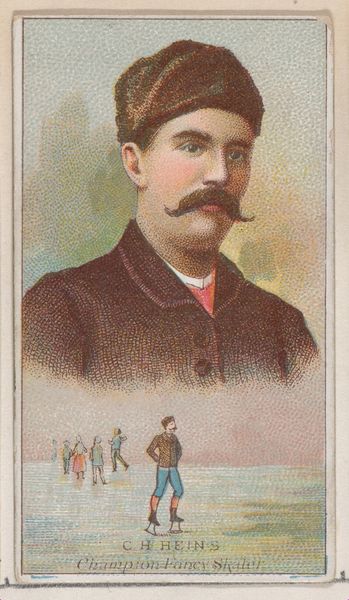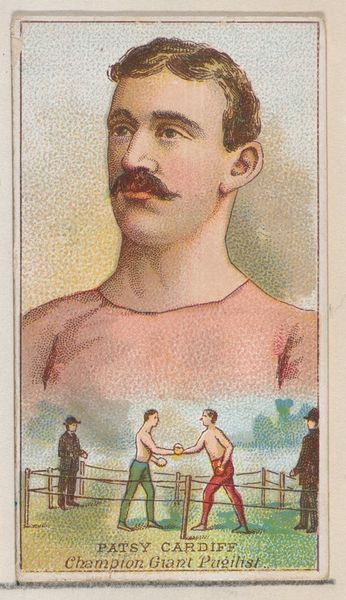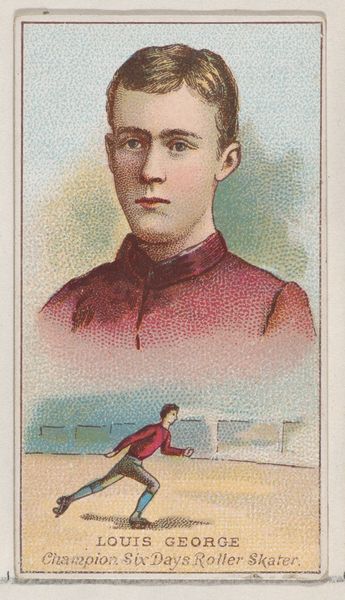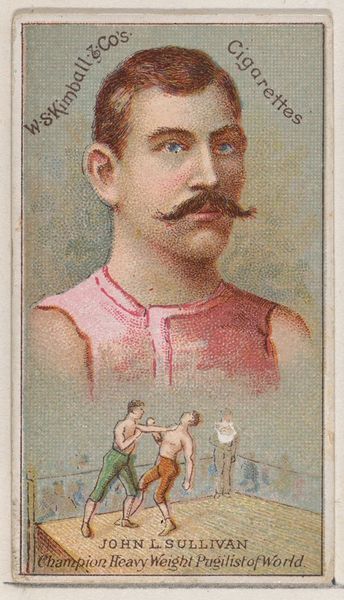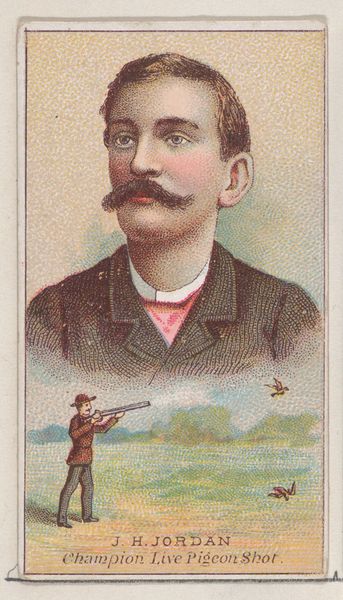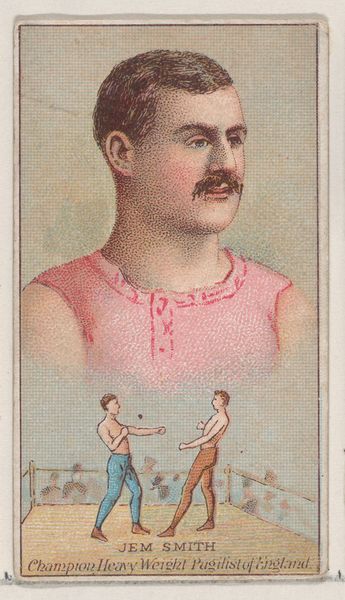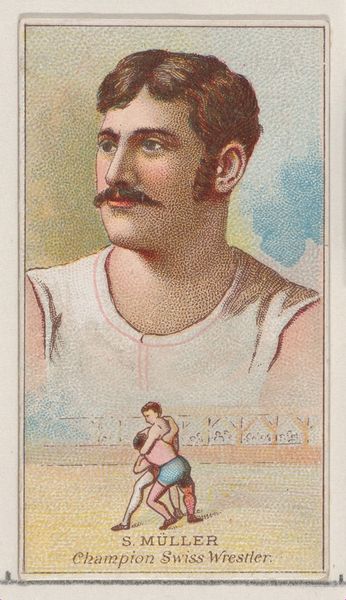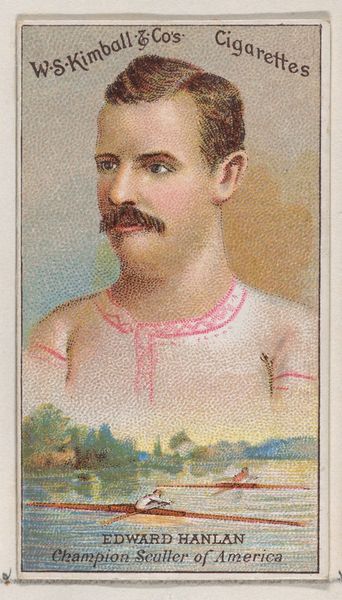
Hardie Henderson, Champion Baseball Pitcher, from the Champions of Games and Sports series (N184, Type 2) issued by W.S. Kimball & Co. 1887
0:00
0:00
drawing, coloured-pencil, print
#
portrait
#
drawing
#
coloured-pencil
# print
#
caricature
#
baseball
#
coloured pencil
#
men
#
genre-painting
#
athlete
#
portrait art
Dimensions: Sheet: 2 11/16 × 1 1/2 in. (6.8 × 3.8 cm)
Copyright: Public Domain
Editor: This is Hardie Henderson, Champion Baseball Pitcher, from 1887, part of the Champions of Games and Sports series by W.S. Kimball & Co. It's a colored pencil print, and the athlete's face has this slightly comical, almost caricature-like quality to it. How should we think about the imagery and purpose of the artwork? Curator: It's interesting to consider this print in terms of its materiality and social context. The colored pencil medium, reproduced as a print, was not considered high art, and here it's being used to celebrate a baseball player. These were trading cards, designed for mass consumption, tied directly to the burgeoning consumer culture of the late 19th century. What kind of labor went into producing these cards and how does this method affect perceptions of the represented athletes? Editor: That's a great point – thinking about the labor involved. So, it's not just about admiring Hardie Henderson's athletic prowess, but also about understanding the industrial processes that made his image so readily available. Were these cards particularly accessible at the time? Curator: Absolutely. They were often included in cigarette packs. Consider that this was a strategy to build brand loyalty by literally attaching a cultural product—the image of a champion athlete—to a consumable good like tobacco. It raises questions about commodification. Was Hardie Henderson, the baseball player, then being consumed in the same way as the cigarettes? How do such images play into class dynamics and societal values about leisure? Editor: It's fascinating how the seemingly simple image of a baseball player opens up all these questions about production, consumption, and even labor practices in the late 1800s. It's more than just a picture, but rather an artifact of industrial capitalism at the time. Curator: Precisely. Analyzing the material production and distribution methods helps us understand the deeper social and economic structures at play and questions the boundary between art and commodity.
Comments
No comments
Be the first to comment and join the conversation on the ultimate creative platform.
